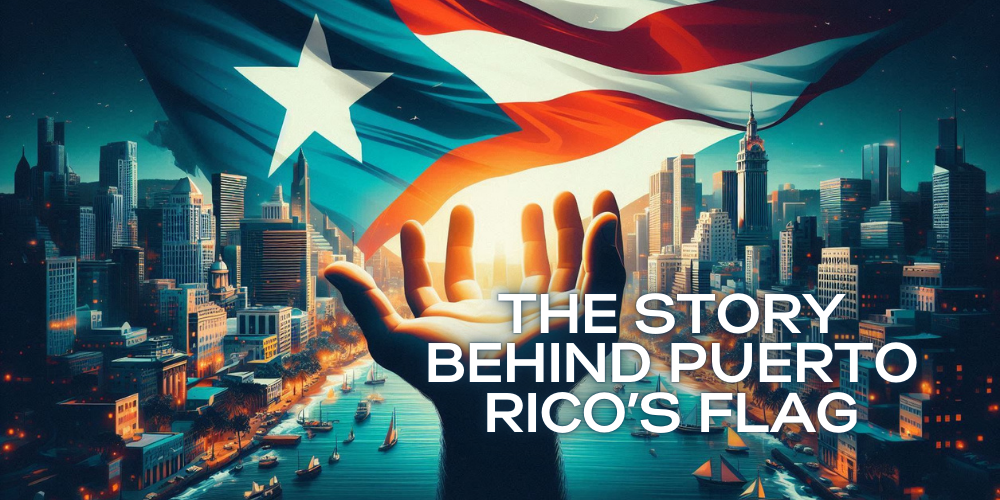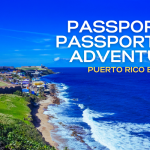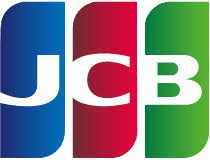The Puerto Rican flag is far more than fabric waving in the Caribbean breeze; it is a symbol of identity, a testament to resilience, and an emblem of pride for Puerto Ricans both on the island and across the globe. This flag holds within its design the story of a people who have faced complex histories, cultural crossroads, and a unique political status. Displayed proudly in homes, parades, and protests, the Puerto Rican flag is a powerful statement of unity and heritage for its people.
Historical Background
The origins of the Puerto Rican flag date back to the late 19th century when the island was still under Spanish rule. Inspired by the Cuban flag, Puerto Rican revolutionaries, who were part of the Puerto Rican Independence Movement, sought a similar symbol to represent their vision of freedom from colonial rule. Designed by members of the Puerto Rican Section of the Cuban Revolutionary Party, the flag made its first appearance in 1895 in New York City. Its resemblance to the Cuban flag is intentional, signifying a shared struggle for independence in the Caribbean.
For many years, the flag wasn’t officially recognized in Puerto Rico itself due to Spanish colonial restrictions, and later, during the early U.S. governance of Puerto Rico, displaying the flag was actually illegal until 1952. It was only then, when Puerto Rico achieved Commonwealth status, that the flag was finally celebrated openly on the island. This moment marked a powerful step in affirming Puerto Rican identity.
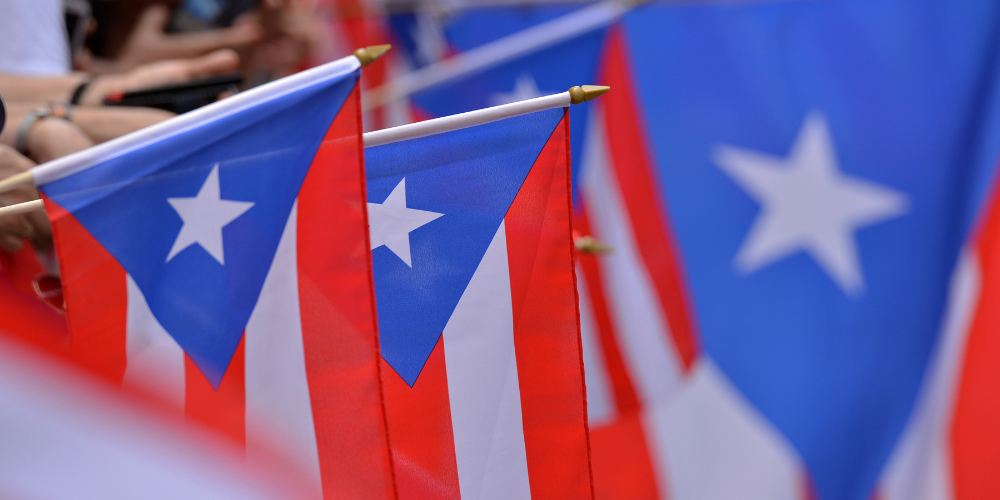
Symbolism and Design
The Puerto Rican flag’s colors and design hold profound meaning. Each color and element symbolizes an aspect of Puerto Rican pride, history, and struggle:
- Red Stripes: Represent the blood of Puerto Rican warriors and, more broadly, the resilience of the people.
- White Stripes: Stand for peace and liberty, ideals that Puerto Ricans have cherished and fought to uphold.
- Blue Triangle: Traditionally symbolizes the island’s sky and coastal waters, and for some, the triangle also represents the government structure of the time.
- Single Star: Represents Puerto Rico itself, singular and proud in its identity.
Over time, Puerto Ricans have felt a strong connection to each element of the flag. This connection remains deeply felt among Puerto Ricans, as it speaks not only to the island’s beauty and resources but also to its community’s unity and strength.
Evolution Through the 20th Century
Throughout the 20th century, the Puerto Rican flag evolved alongside the island’s relationship with the United States. In the early years of U.S. rule, public displays of the flag were banned, which fueled a sense of resistance and strengthened its symbolism. By the 1950s, as Puerto Rico’s status shifted to that of a U.S. Commonwealth, the flag was legalized, and Puerto Ricans could proudly display it again. This moment marked a resurgence of Puerto Rican pride and solidarity, and the flag became a unifying emblem.
The Flag in Modern Puerto Rican Identity
In modern Puerto Rican identity, the flag is synonymous with pride, especially during challenging times. For instance, after Hurricane Maria in 2017 devastated the island, Puerto Ricans clung to the flag as a symbol of resilience and hope. Even as the island struggled to rebuild, the flag became a rallying point for aid, solidarity, and protest.
For Puerto Ricans in the diaspora, the flag is often an emotional reminder of home and heritage. Whether hanging in a rear-view mirror or on display at rallies, the flag signifies a longing for connection and a strong sense of community. It also embodies a spirit of defiance, especially when advocating for better resources, rights, and recognition for Puerto Rico.
Variations and Controversies
While the flag’s design is widely recognized, variations in color have sparked some debate. Originally, the blue in the triangle was a lighter shade, closer to sky blue. However, a darker shade, closer to the blue in the U.S. flag, became more common in official contexts. This change, though seemingly small, has stirred strong opinions, as some see the darker blue as symbolic of the influence of the United States.
Another powerful variation is the black-and-white Puerto Rican flag, often used in protests. Known as the “resistance flag,” this monochromatic version represents a rejection of current social or political conditions, highlighting issues like economic inequality, government corruption, and the ongoing debate over Puerto Rico’s political status. For many, this variation is a statement of resilience, showing that Puerto Ricans will continue to fight for what they believe is right.
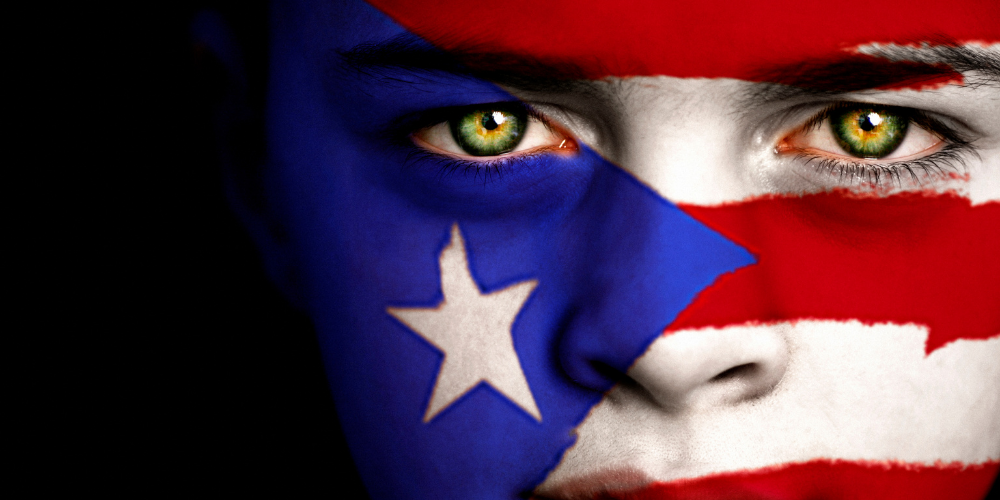
The Puerto Rican Flag as a Global Symbol
Today, the Puerto Rican flag is recognized far beyond the island’s borders. It has become a global symbol of Puerto Rican identity, resilience, and pride. At cultural festivals, music events, political gatherings, and even sports games, the flag is proudly waved as a reminder of Puerto Rican heritage. Particularly within the U.S., where millions of Puerto Ricans live, the flag symbolizes both a connection to the island and the fight for recognition and rights.
The flag’s presence during large gatherings, such as the Puerto Rican Day Parade in New York City or solidarity protests for hurricane relief, demonstrates its enduring power. It tells the world that Puerto Ricans, no matter where they are, hold their homeland close to their hearts.
The Puerto Rican flag is more than just an emblem; it is a deeply cherished representation of a unique cultural identity. For Puerto Ricans, the flag represents love for the island, pride in their heritage, and resilience through hardship. As Puerto Rico and its people continue to face challenges, the flag remains a powerful symbol of hope and unity, a reminder of a culture that has persevered through centuries.

